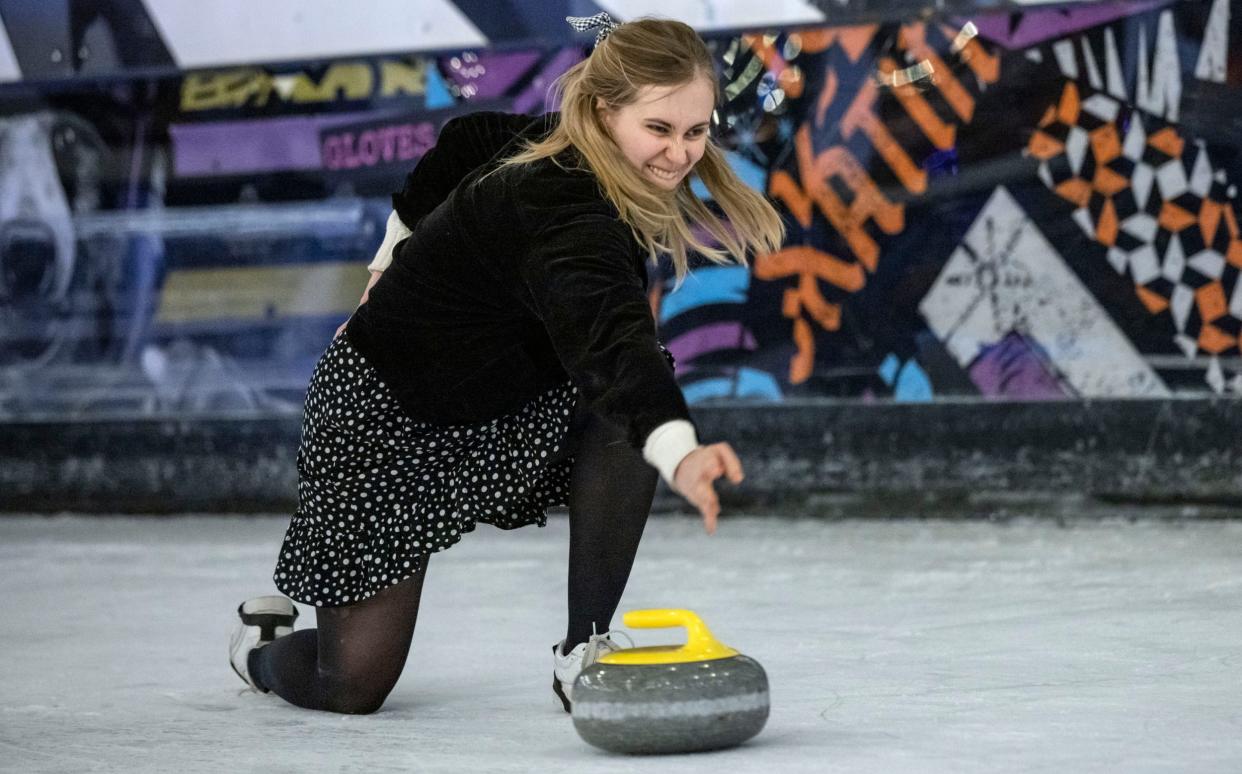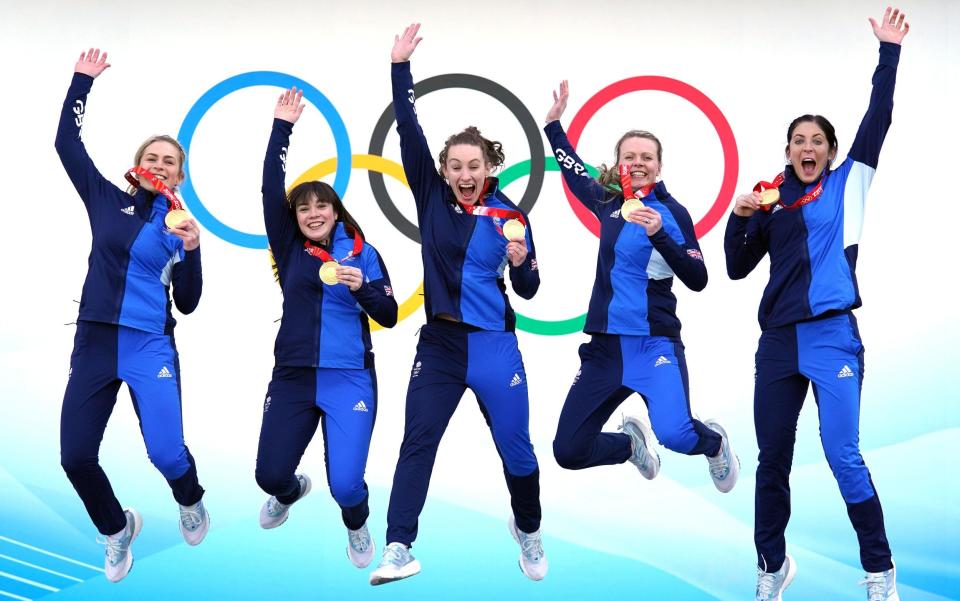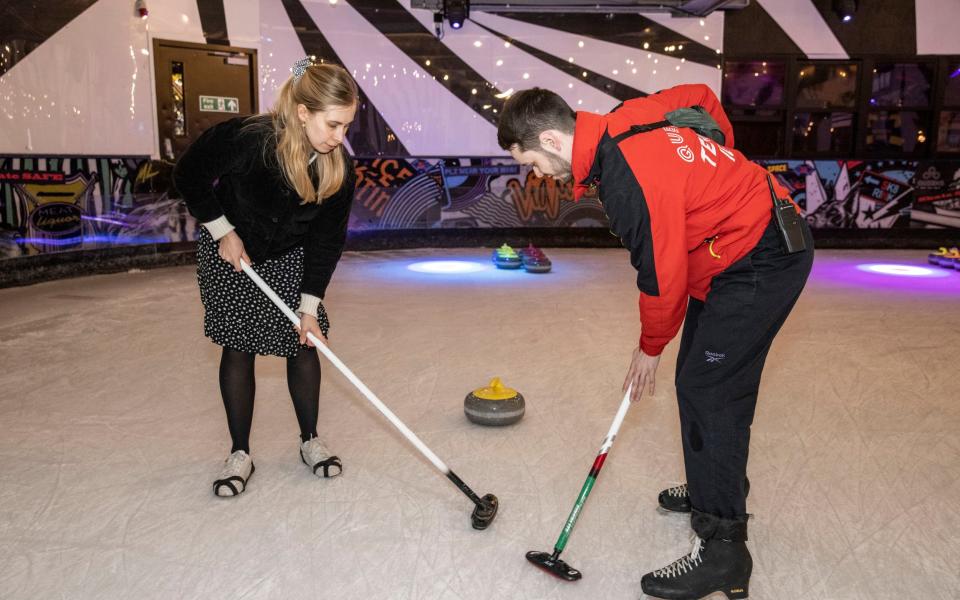Uh oh – is curling about to get a hipster makeover?

Less than 48 hours after Team GB took home gold and silver medals in curling, I gingerly step onto the ice, kneel down, and heave an enormous stone as far as I can. It glides along nicely for a few yards, then skitters and gives up about a third of the way to the target. It turns out that curling, which I had long believed to be as taxing as bowls and as serious as hopscotch, is actually very difficult.
I’m not alone in coming to the sport now: rinks are booked up after millions tuned in to watch the GB women’s team win gold and the men win silver at the Winter Olympics in Beijing. Ice rinks are being urged to stock up on curling stones, in anticipation of a post-Olympics boom in interest, and venues are reportedly booked up.
“Our sessions are almost sold out for the next two weeks”, the manager of one of England’s biggest curling rinks told The Telegraph.
I head to Queens, a rink in central London, which over the past few years has been trying to reinvigorate the sport by giving it a hipster makeover. While the sport might be commonly thought of as something for the older generation, Queens is taking efforts to make it appeal to younger people. The walls are decorated with false graffiti and sports memorabilia, and the rink is ringed by a bar selling craft beer.

I tack grips onto the bottom of my trainers, and have 19-year-old curler Leo De Souza explain how to wang the 44lb (20kg) granite stone as far as I can. He explains that I need to “push right until the end”, ending with a flick of the wrist. I give it a try, bracing my core and using the strength of my entire body to move the stone forwards. The stone races on, as does my heart rate.
The sport might have experienced a recent surge in popularity, but it has been played for at least 500 years in some form. It emerged in Scotland in the 16th century, where people played on frozen ponds and lochs, and soon spread to continental Europe. Its rules were codified in their current form by the Royal Caledonian Curling Club, Stirling, in the mid-19th century.
This year isn’t the first time that Team GB has taken home a haul of curling medals. At the 2002 Winter Olympics in Salt Lake City, the women’s team took home gold medals after delivering “the Stone of Destiny” that gave Team GB their first Winter Olympics gold for almost two decades. After their success, they were mobbed at the airport on their arrival home, and overnight became household names.
Its ongoing popularity over the past half-millennium has undoubtedly been helped by its unique blend of physical strength and mental tactics. Curling is frequently called “chess on ice” due to the intricate turn-based tactics you need to succeed, which vary wildly based on whether your team starts first or second.

Just like in chess, your stones will be either used to attack, or to protect your attacking stones from the other team, explains Stephen Lea, a 50-year-old IT manager from Tunbridge Wells who has been curling for a decade. If your team goes first, then you typically try to throw “guard” stones which block the other team from approaching the house, whereas the team who goes second will prefer to “keep the centre of the house open”.
“It’s very much like chess”, he says. “There are all types of plays that different teams do.”
But with hip rinks like Queens now offering curling, will the image of the sport undergo a bit of an image rehaul? It’s not the first old-fashioned sport to be folded into the trend for “competitive socialising”: Flight Club is a chain of bars across the country where groups of punters can enjoy cocktails while they play darts, and in Australia there’s even a place where you can do boozy lawn bowls.
“We looked at curling as bowling’s wonderful, weird cousin”, says Dan Kapp, the marketing director of Queens. “It’s nicely social… People are craving experiences after being stuck behind a screen for two years, and it provides sensational Instagram content.”
He says that the professional curling bodies have been very welcoming to the informal game they’re playing at Queens, with a shorter rink than they use in the Olympics, and plenty of drinks after.
And there might be a reason for that: even in the competitive sport, a tournament always ends in the bar, says Lea: “It’s a very social game; the winner buys the loser drinks”.
Bad news for Team GB, then: that’s one hell of a bar tab.

